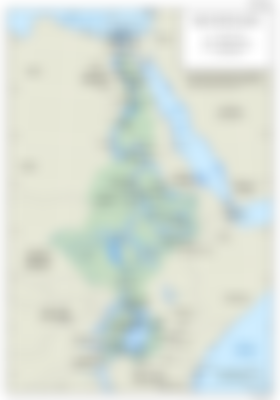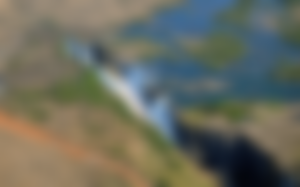Physical aspects
The physical aspects of Africa are associated with large deserts, and the reliefs are mostly formed by plateaus, with an average altitude of over 750 meters.
In Africa there are rivers of great extension, like the Nile. We have other examples like the Niger River, Congo, Zambezi. Among the smaller rivers, we mention Senegal, Orange, Limpopo and Zaire. Let's see a little more:
Nile River
With its 6,690 kilometers of extension, it flows into the Mediterranean Sea. With springs in the region of the African lakes and in Ethiopia, the River Nile crosses from south to north a large part of the continent and serves several countries.

Map of the Nile River Basin
Congo River
It is 4,700 kilometers long, the second largest river in the world in water volume. Its source is located in Zambia and flows into the Atlantic Ocean.

Congo River Basin Map
Lake Victoria
A large lake, located in a part of the Rift Valley tectonic fault complex. It borders Kenya, Uganda and Tanzania. With an area of approximately 43,178 square kilometers, it is the second largest fresh water lake on the planet.

Map of the surroundings and Lake Victoria area
Sahara Desert
Located in North Africa, it stretches across 11 countries, and is popularly considered the world's largest and hottest desert.

Map of the area covered by the Sahara Desert
Kalahari Desert
Located in southern Africa, derived from the word Kgalagadi, which means place of the great headquarters.

Map of the area covered by the Kalahari Desert
Deserts have their formation associated with high atmospheric pressures over the tropics, continentality and absence of humid sea winds.
Curiosities
Victoria Falls
Also called Vitória Falls, located on the Zambezi River, on the border between Zambia and Zimbabwe. It is the largest waterfall in Africa, with heights ranging from 61 to 128 meters.

Photograph seen from above Victoria Falls
After we learn a little more about Africa, and do you know any place different from the above? Feel free to write in the comments!





